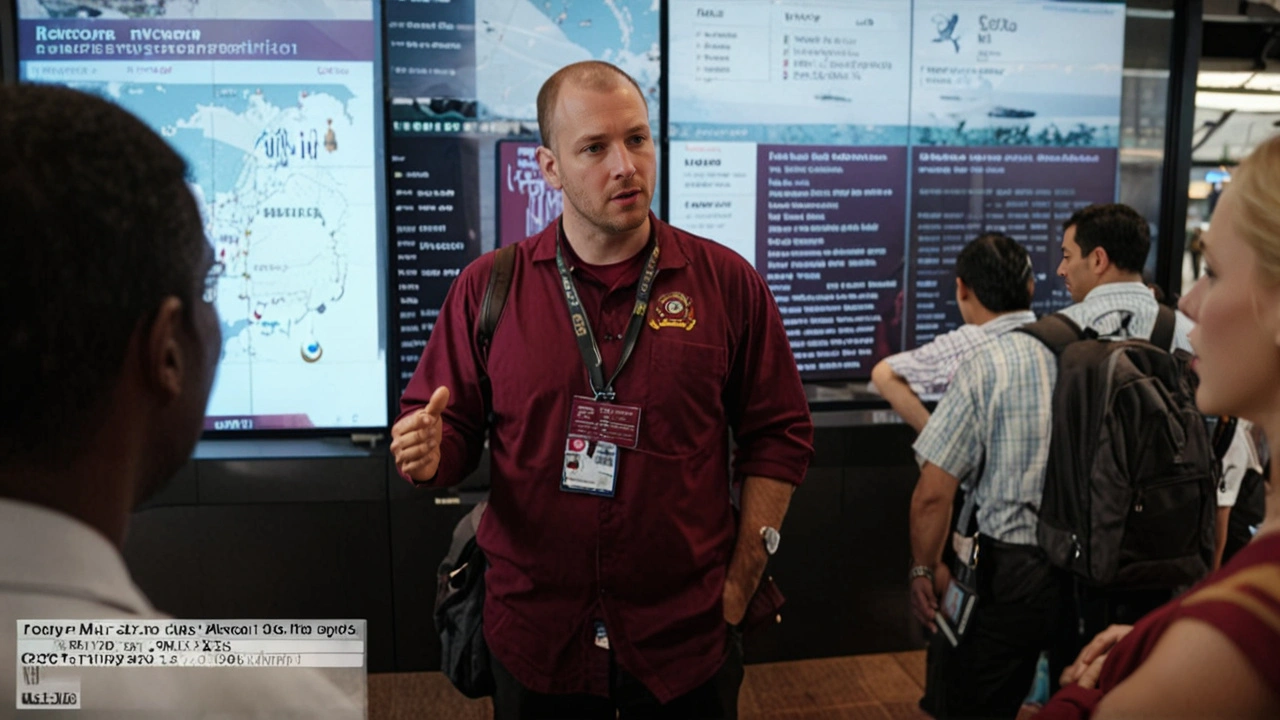- Home
- CrowdStrike Windows Outage: Global Disruptions and Solutions Unveiled
CrowdStrike Windows Outage: Global Disruptions and Solutions Unveiled

The Unfolding Chaos of the CrowdStrike Outage
In a surprising turn of events, a recent update from cybersecurity giant CrowdStrike has led to widespread disruptions across Windows computers globally. This problem has not only hampered individual users but has had a significant impact across various sectors, bringing critical services to a halt. The crux of the issue revolves around CrowdStrike’s Falcon Sensor product, which is specifically designed to protect systems from cyber threats. However, following the most recent update, many users have experienced system crashes and the dreaded Blue Screen of Death.
The fallout from this issue has been extensive. Several media outlets, including Sky News, have reported their systems crashing, which has hindered their ability to deliver timely news updates. Furthermore, airports in multiple countries have seen their operations thrown into chaos. Planes have been grounded in the U.S., train services have been disrupted in the U.K., and boarding scanners at Edinburgh airport have encountered malfunctioning problems. Such disruptions not only impact the day-to-day operations but also lead to significant inconveniences for travelers globally.
Understanding the Root of the Problem
The Falcon Sensor product, at the center of this crisis, is vital to maintaining cybersecurity for many organizations. It acts as a sentinel, guarding against potential threats by monitoring system activities and detecting any anomalies. However, the latest update seems to have introduced a bug that leads to system instability. The engineering team at CrowdStrike is currently working around the clock to identify the root cause and develop a comprehensive fix to resolve this issue.
As of now, CrowdStrike has suggested a temporary workaround for affected users. This involves entering Safe Mode on the affected Windows computer, locating, and deleting a specific file associated with the update before rebooting the system normally. While this may provide a temporary solution, it requires manual intervention on each affected system, posing significant logistical challenges for organizations with large-scale operations. This method is also time-consuming and may not be feasible for all users, thereby leaving many systems vulnerable.
The Broader Impact and Response
Aside from disrupting critical services, the CrowdStrike issue has sparked significant concern in the cybersecurity community. Microsoft has also begun investigating the potential impact of this problem on its cloud services. This highlights the pervasive influence of CrowdStrike’s software and underscores the critical need for robust and reliable cybersecurity solutions. The current situation calls into question the reliability of automated updates and the protocols in place for swiftly addressing such widespread issues.
For sectors that rely heavily on consistent and reliable system performance, the repercussions have been severe. Grounded planes in the U.S. have led to travel delays and logistical challenges. In the U.K., train services have been significantly disrupted, adding strain to an already pressure-packed transportation system. Edinburgh airport’s boarding scanners’ malfunction means delays and potentially missed flights, affecting thousands of passengers. The knock-on effects of these disruptions are far-reaching, impacting not only businesses but individuals who rely on these services in their day-to-day lives.
The Path Ahead: Solutions and Strategies
CrowdStrike’s immediate focus is on developing a permanent fix to the problem. While the engineering team works on this, cybersecurity professionals stress the importance of effective and clear communication from CrowdStrike. Providing regular updates on the progress of the fix, detailed instructions for the suggested workaround, and guidance on how to prevent further updates until the issue is resolved, are deemed crucial steps in mitigating the impact of this crisis.
In the interim, affected organizations are advised to follow the temporary workaround provided by CrowdStrike, while closely monitoring communications for further instructions. It is also recommended that businesses conduct their own risk assessments and prepare contingency plans to deal with potential cybersecurity failures. This proactive approach can help mitigate the impact of such incidents in the future.
Lessons Learned and Future Considerations
This incident with CrowdStrike serves as a stark reminder of the vulnerability of even the most robust cybersecurity infrastructures. It underscores the importance of rigorous testing before the deployment of updates and the necessity for swift incident response mechanisms. Organizations need to reassess their reliance on automated updates and consider implementing additional layers of testing and verification.
Moreover, the role of effective communication cannot be overstated. In times of crisis, timely and clear communication can significantly alleviate the impact on end-users. CrowdStrike’s response to this incident will likely be scrutinized by industry peers and could set a precedent for how similar situations should be handled in the future.

Conclusion
The CrowdStrike outage serves as a significant learning experience for the cybersecurity community and organizations dependent on these services. While the Falcon Sensor's failure has caused widespread disruption, it has also highlighted the need for improved response strategies and communication protocols. As CrowdStrike works towards a permanent solution, the industry watches closely, taking notes on how to better prepare for and respond to such unprecedented challenges.
Ultimately, this situation underscores the essence of cybersecurity: constant vigilance, adaptability, and robust communication. In an increasingly digital world, these principles will continue to guide organizations in safeguarding their operations against unforeseen challenges and threats.


Write a comment